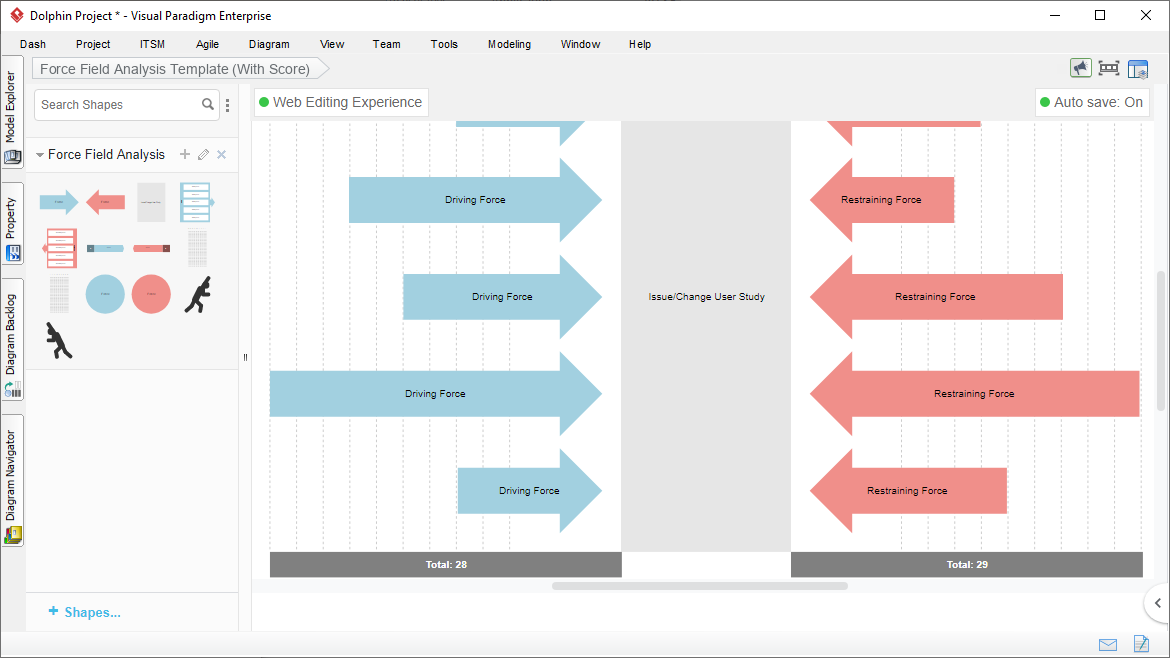A Force Field Analysis tool with professional features and templates

Creating force field model has never been easier. Visual Paradigm force field analysis tool provides a wide range of unique templates and features to help you create beautiful and professional force field diagrams in minutes. No matter you need to design a simple or complex diagram, you will find Visual Paradigm a force field analysis software that you love working with.
